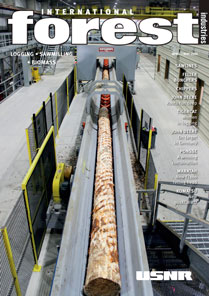EDITOR’S COMMENT ISSUE 74
We will go on
Well, what can I say?
It speaks volumes of the pace at which the COVID-19 pandemic has completely changed our lives that, when I last penned this column, the virus was barely a consideration. Today, depending on where you are in the world, it sees you anywhere from mildly inconvenienced by travel constraints to suppressed by military level lockdown and fearing for vulnerable friends and relatives.
For some, the impact has been, or will be, as confronting a challenge as one could imagine at a personal level, with a loved one – or ones – dying without a consoling hand to hold. For hopefully only a tragic few, there will be readers that face death themselves.
For all, the economic impact will be felt as the world plunges into what will be, at best, a deep V-shaped recession then recovery or, in the very worst-case scenario, a public health failure that could potentially see a spiral of death and economic despair feeding off each other for an indefinite period.
Thankfully, if we can take any guide from capital markets and governments, the (smart?) money is backing the former. Equity markets and debt markets alike are recovering in anticipation of a difficult period followed by sharp acceleration. China has returned to work. Governments in Europe where COVID-19 grabbed a greater toe-hold are openly strategizing about lifting lockdown measures.
It will be painful, but it looks likely to be relatively brief. If we can convince ourselves this will be the case, the question then turns to what the world will look like once it is in recovery mode.
At a macro level, it feels certain loose monetary policy will be maintained as long as politicians remain fearful of recession becoming depression; interest rates will remain low or, in places, turn negative.
That will allow inflation to run largely unchecked as the stimulus injected into economies – unlike in the 2008 crisis that saw the lifelines offered extended almost exclusively to financial institutions – reaches real businesses and individuals in the real economy. This is unlikely to concern politicians a great deal, at least in the short-to-medium term, given the only real chance to tackle what will be previously unimaginable sovereign debt levels is to at least partly inflate them away.
In the longer term, taxes will have to rise and pensions in some rich countries with aging populations may come under threat. But, right now, that feels like a problem for another day. The fight right now must be won, first.
Overall, a deep hit now tackled by government growth incentives that start showing through in economies later this quarter – just when the world starts to go back to work – would mean a strong recovery.
Though forestry industries are as likely as most others to face the wall in the current predicament, they are better placed to benefit from stimulus during. The standard sector to place capital as an economic catalyst is construction – it is how China has maintained eye-watering GDP numbers and employed millions of urbanising Chinese.
At the heart of construction is, of course, forestry. Forestry businesses will be among the first back to work and they will be given significant incentives – some direct and some indirect – to grow and show productivity.
For this, I suppose we should be thankful, as difficult as it may be to feel any gratitude right now.
Chris Cann







